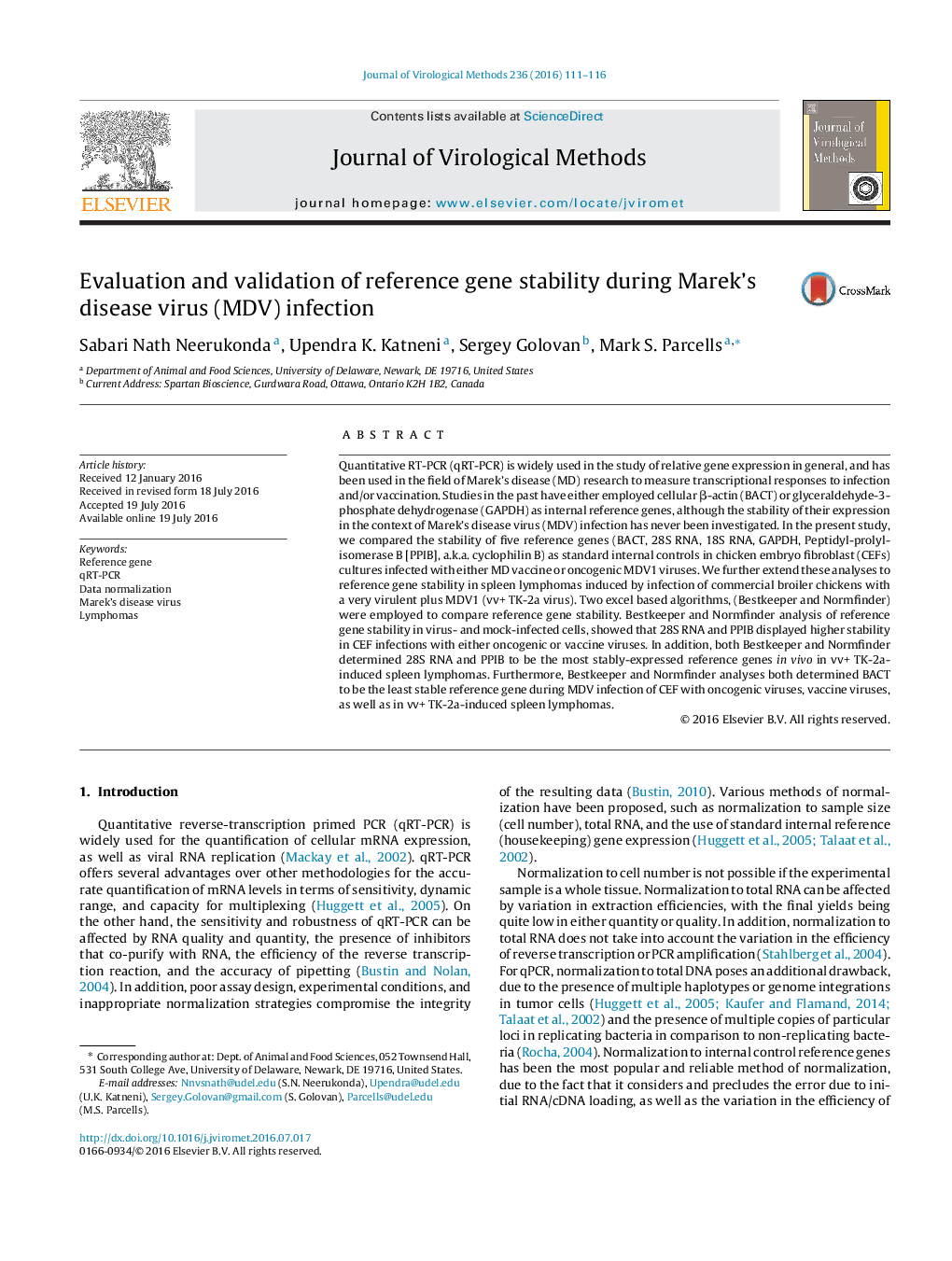| Article ID | Journal | Published Year | Pages | File Type |
|---|---|---|---|---|
| 6132749 | Journal of Virological Methods | 2016 | 6 Pages |
Abstract
Quantitative RT-PCR (qRT-PCR) is widely used in the study of relative gene expression in general, and has been used in the field of Marek's disease (MD) research to measure transcriptional responses to infection and/or vaccination. Studies in the past have either employed cellular β-actin (BACT) or glyceraldehyde-3-phosphate dehydrogenase (GAPDH) as internal reference genes, although the stability of their expression in the context of Marek's disease virus (MDV) infection has never been investigated. In the present study, we compared the stability of five reference genes (BACT, 28S RNA, 18S RNA, GAPDH, Peptidyl-prolyl-isomerase B [PPIB], a.k.a. cyclophilin B) as standard internal controls in chicken embryo fibroblast (CEFs) cultures infected with either MD vaccine or oncogenic MDV1 viruses. We further extend these analyses to reference gene stability in spleen lymphomas induced by infection of commercial broiler chickens with a very virulent plus MDV1 (vv+ TK-2a virus). Two excel based algorithms, (Bestkeeper and Normfinder) were employed to compare reference gene stability. Bestkeeper and Normfinder analysis of reference gene stability in virus- and mock-infected cells, showed that 28S RNA and PPIB displayed higher stability in CEF infections with either oncogenic or vaccine viruses. In addition, both Bestkeeper and Normfinder determined 28S RNA and PPIB to be the most stably-expressed reference genes in vivo in vv+ TK-2a-induced spleen lymphomas. Furthermore, Bestkeeper and Normfinder analyses both determined BACT to be the least stable reference gene during MDV infection of CEF with oncogenic viruses, vaccine viruses, as well as in vv+ TK-2a-induced spleen lymphomas.
Related Topics
Life Sciences
Immunology and Microbiology
Virology
Authors
Sabari Nath Neerukonda, Upendra K. Katneni, Sergey Golovan, Mark S. Parcells,
